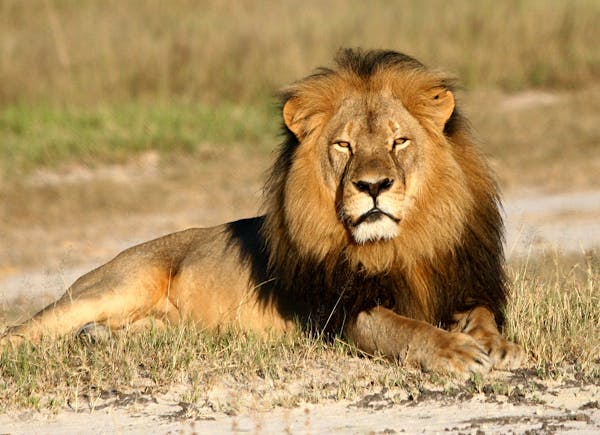Fifteen years of systematic tree removal from prairie landscapes in Minnesota hasn't altered the initial response that many people still experience when they witness the conservation handiwork of a chain saw or bulldozer.
When crews clear a grove of eastern red cedar from an old farmstead or take down a stand of mighty cottonwoods, it often goes against deeply ingrained human sensibilities that trees should be planted and forests should be protected.
But as grassland enhancement projects continue to accelerate at the expense of woodlots, Minnesota's prairie restoration engineers say they are getting less pushback than they once did.
"We have more trees out there than we want or need,'' said Greg Hoch, prairie habitat team supervisor for the Department of Natural Resources (DNR). "That's something more people are starting to realize.''
Among the DNR, the U.S. Fish & Wildlife Service, The Nature Conservancy, Pheasants Forever and Ducks Unlimited, more than 15,000 acres of land a year are targeted for tree removal projects in the state. Millions of dollars a year have been spent on the quest, and the support keeps coming.
In June, more goodwill for the movement should radiate from an international meeting in Fergus Falls of the North American Wetlands Conservation Act Council. Administered by the Fish and Wildlife Service, the council will decide on a major round of conservation grants to benefit migratory birds and other wildlife that have disappeared or dwindled from the Upper Midwest with the loss of grasslands and wetlands.
Neal Feeken, grassland conservation program director for The Nature Conservancy, said his organization has received a lot of rebukes over the years from township officials and rural residents outraged by various tree removal projects. In some cases, the trees were planted by a dear, deceased family member. In other cases, trees had become a comforting landmark.
"Conservation groups take a lot of heat,'' Feeken said. "There's definitely times when the neighbors don't like it.''
But land managers have improved their communications with people who live near removal sites, and the results — along with an understanding of the rationale — are swaying opinions.
Feeken said there was a recent case in western Minnesota in which a neighbor became "really unhappy'' by the removal of a sizable shelter belt of mature Siberian elms. The neighbor's attitude reversed when the cutting revealed a wider, more open landscape.
"Now they can see 5 miles to the river,'' Feeken said. "It's a shock when people finally see the difference.''
Over the past decade, the Minneapolis-based nonprofit has been allocated $27.8 million from the Outdoor Heritage Fund for its Minnesota Prairie Recovery Project. The same fund, overseen by the Lessard-Sams Outdoor Heritage Council, is a major source of prairie tree removal projects by the DNR and Fish and Wildlife Service. This year, Feeken said his organization is recommended for another $2 million Outdoor Heritage grant in a funding package awaiting approval from the Legislature.
The concept of purifying grasslands by removing trees has become so well accepted by the Lessard-Sams council that The Nature Conservancy applies the money as it sees fit, then reports which projects it completed.
One large project recently cut down overgrown cedar trees from ridges on an 800-acre prairie preserve near Lake Johanna in Pope County. In two years, native plants have sprung back, and the site — open to hunting and other public use — "is now an impressive example of what a healthy prairie looks like,'' Feeken said.
The removals also eliminate trees as seed sources, making long-range prairie management more affordable. A stand of box elders on the fringe of a field that's being converted from cropland to grassland can infect a newly seeded "prairie'' right away with four or five tree seedlings per foot.
The tree removals are reviving habitat for grassland birds, Hoch said. That's because trees planted in native prairies proliferated and gave raptors, foxes, skunks, raccoons and other critters places to live.
"The trees made easy pickings for the predators,'' Hoch said.
The trees also provide habitat for deer and wild turkeys — another reason some people hate to see them cut down. But as Hoch and others note, resource managers can't take a piece of land and manage it for every species.
"We are managing these sites for grassland wildlife, not forested wildlife,'' Hoch said.
Scott Glup, an official with the Litchfield Wetland Management District of the U.S. Fish and Wildlife Service, said some of the same landowners who were critical of tree removal projects 15 years ago are now selling permanent easements to the agency with the shared goal of returning undisturbed grasses to the landscape.
The ambition has carved out more and more trees from private lands that surround federal waterfowl production areas, thinning predator habitat and reducing tree seedling headaches.
"It's spreading,'' Glup said. "Our ultimate goal is wild prairies.''
Still, conflicts and misunderstanding remain.
Hoch said there are still cases of disgruntled landowners who were encouraged decades ago to plant rows of trees for winter wildlife cover. Now they're being told that the woody vegetation should be removed. Or that their tree-accented prairie land doesn't qualify for certain conservation programs.
"I understand the confusion,'' Hoch said. "They'll say, 'Someone with a shirt like yours told me 20 years ago to do it the other way.' ''

Gophers men's basketball lands big-man transfer Mitchell from Canisius

Twins reliever Stewart builds on impressive 2023 season
Kucherov is 5th player in NHL to reach 100 assists as Lighting beat Matthews, Maple Leafs 6-4
Grateful for the beast that is the Boston Marathon

